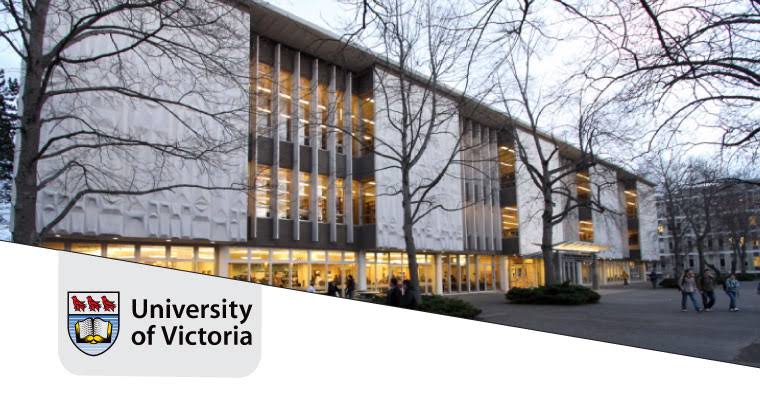Virtual reality (VR) has moved beyond gaming and entertainment into serious sectors like healthcare, architecture, and education. In Canada, VR is transforming the way students learn, interact, and explore academic content.
As of July 2025, educational institutions across the country—from elementary schools to universities—are investing in VR tools to enhance teaching and learning experiences. These immersive technologies are helping to close learning gaps, create new opportunities for engagement, and prepare students for future careers.
The integration of VR into Canadian education is no longer experimental; it is becoming a standard component of modern, digitally connected classrooms.
Enhancing Student Engagement Through Immersive Learning
One of the most notable impacts of VR in education is the increase in student engagement. Traditional classroom environments often rely on lectures and textbooks, which can be limiting for visual or kinesthetic learners.
With VR, students can explore historical sites, conduct science experiments, or walk through the solar system—all from within the classroom. These virtual experiences stimulate curiosity and make abstract concepts easier to grasp.
For example, students studying biology can enter a simulated human body, interact with organs, and observe biological processes in real time. Such immersive experiences have been shown to increase attention spans and memory retention.
Expanding Access to Quality Education in Remote Areas
Canada is known for its vast geography, with many communities in rural and northern regions lacking access to specialized teachers or advanced educational facilities. VR is helping to bridge this gap.
Through virtual reality, students in remote areas can attend lectures from top universities, participate in virtual labs, and collaborate with peers across the country. This technology removes the barriers of distance and provides a more level playing field for all learners.
Organizations like Connected North and the Council of Ministers of Education, Canada (CMEC), are actively promoting the use of VR to improve digital access for Indigenous and rural communities.
Revolutionizing Teacher Training and Professional Development
The benefits of VR aren’t limited to students. Teachers and educators in Canada are using VR to improve their teaching methods and receive real-time professional development.
By using VR simulations, trainee teachers can practice classroom management, lesson delivery, and student engagement techniques in a risk-free virtual environment. This kind of training provides realistic scenarios without the pressure of live classrooms.
Professional development modules now often include VR-based workshops, where educators can learn how to integrate immersive technologies into their curriculum effectively.
Supporting Inclusive Education for Diverse Learners
Canada’s education system places strong emphasis on inclusivity and support for diverse learning needs. VR is proving to be a valuable tool in special education by providing tailored learning environments for students with physical, cognitive, or emotional challenges.
For students on the autism spectrum, VR can simulate social scenarios and help them practice responses in a controlled, repeatable setting. For learners with mobility impairments, VR removes physical constraints, enabling them to explore places and concepts they otherwise couldn’t.
VR also supports English language learners by offering immersive language environments that enhance vocabulary acquisition and pronunciation through repetition and interaction.
Improving Learning Outcomes in Science, Technology, and Engineering
STEM education—science, technology, engineering, and math—has greatly benefited from the introduction of VR in Canadian schools. These subjects often involve complex theories and detailed structures that can be hard to visualize.
With VR, students can manipulate 3D models of atoms, construct circuits, or simulate engineering designs. This hands-on approach leads to a deeper understanding of concepts and encourages problem-solving and innovation.
Programs like ClassVR and Labster are now used in many Canadian secondary schools and colleges, enabling students to engage with realistic simulations without the risks or costs associated with real-life experiments.
Challenges in Widespread VR Implementation
Despite its many advantages, integrating VR into education comes with challenges. The high cost of hardware, such as headsets and compatible devices, remains a significant barrier, especially for underfunded schools.
There is also a need for teacher training. Not all educators are comfortable with the technology, and there can be a learning curve when integrating VR into existing lesson plans.
Privacy and cybersecurity are additional concerns. As VR tools collect data on user behavior and interaction, schools must ensure that this information is stored securely and complies with Canadian privacy laws.
Government and Institutional Support for VR in Education
Recognizing the potential of VR in transforming education, both federal and provincial governments are supporting initiatives to expand its use. Funding programs like Canada’s Digital Learning Strategy and the Innovation in Education Fund have allocated resources to schools adopting immersive technologies.
Post-secondary institutions are also leading the charge. Universities such as the University of British Columbia and McGill have dedicated VR labs for education research and development.
These initiatives are helping to build infrastructure, train educators, and support the creation of Canadian-made VR educational content tailored to national curriculums.
Preparing Students for a Tech-Driven Workforce
As the job market becomes more technology-oriented, Canadian students need digital fluency and adaptability. VR is playing a role in preparing students for the workplace of the future.
Industries such as healthcare, aviation, construction, and retail are already using VR for employee training and operations. By gaining experience with this technology early, students become more comfortable with the tools they may encounter in their careers.
Canadian colleges and vocational institutes are incorporating VR into job training programs, from nursing simulations to virtual carpentry workshops. These practical applications help bridge the gap between education and employment.
Conclusion: A Transformational Shift in Education
The impact of virtual reality on Canadian education is significant and ongoing. As of July 2025, VR is not just enhancing how students learn—it is redefining what education looks like.
From improving engagement and accessibility to supporting inclusive learning and teacher development, VR is driving a major shift toward experiential, student-centered education.
While challenges such as cost and training remain, the momentum is strong. With continued support from governments, schools, and tech innovators, virtual reality is poised to become a foundational tool in shaping Canada’s educational future.



